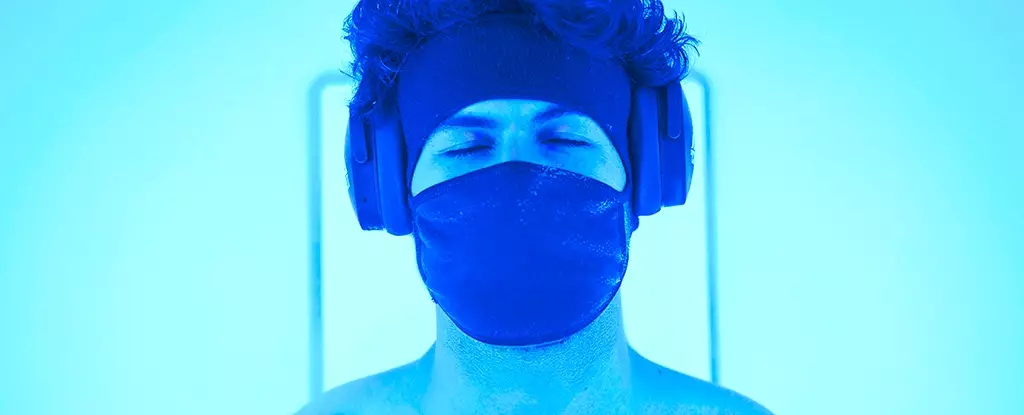In recent years, the quest for improved sleep quality has led researchers to explore innovative methods. One intriguing avenue is cryostimulation, which involves exposing the body to extreme cold, often in environments that reach temperatures as low as -90°C (-130°F). This radical treatment modality, once only accessible to elite athletes, has garnered attention for its potential to enhance sleep quality and bolster mood. A recent study from the University of Poitiers in France has opened a window into how this intense cold exposure can influence our nightly rest, suggesting that temporary immersion in frigid climates might set the stage for significant benefits in sleep patterns.
The study in question tracked twenty healthy participants, primarily in their early twenties, over a five-day period where they engaged in daily five-minute sessions within a cryostimulation chamber. The participants undertook their normal daily activities but eliminated caffeine, alcohol, and intense physical exertion to ensure accurate assessment of the cryostimulation’s effects. Notably, throughout the night, their brain and heart functions were meticulously monitored to gauge sleep quality accurately.
The findings revealed a promising enhancement in slow-wave sleep (SWS), an essential phase of the sleep cycle known for its restorative properties. On average, SWS duration increased by 7.3 minutes per night, a potentially meaningful improvement considering the critical role of deep sleep in bolstering memory and cognitive function. Additionally, participants reported noticeable improvements in mood and reductions in anxiety levels following the cold exposure, particularly among female participants, indicating a possible gender variability in response to cryostimulation.
The implications of this research could be far-reaching. While setting up a cryochamber at home isn’t feasible for most, the insights from the study may inform future therapeutic approaches for individuals experiencing persistent sleep disturbances or conditions precipitated by chronic inflammation and neurodegenerative diseases. Furthermore, athletes recovering from rigorous training might find cryostimulation an effective tool for enhancing recovery and overall well-being.
Yet, with every innovative approach, caution must be exercised. The study’s limited sample size leaves ample room for skepticism and necessitates further investigation into the optimal conditions for cryostimulation. Factors such as duration of exposure, individual physiological responses, and the long-term effects of repeated cold exposure on sleep quality are critical areas warranting deeper exploration.
The relationship between cold exposure and sleep quality is indeed a fascinating one. Although the cryogenic temperatures significantly improved slow-wave sleep, the treatment did not appear to impact the participants’ ability to fall asleep or the amount of REM sleep achieved, a phase critical for dreaming and emotional processing. This suggests that while cold exposure can enhance certain aspects of sleep, it is not a panacea for all sleep-related issues.
Adding complexity to the findings, the disparity in responses between genders hints at a deeper connection between biological factors and therapeutic efficacy. It prompts a critical question: Should our approach to sleep therapies consider gender-specific treatments? While the research presents a compelling case for the connection between cryotherapy and improved sleep quality, it also underscores the need for tailored therapeutic strategies that cater to individual differences.
Incorporating cold therapy into holistic approaches to sleep enhancement poses exciting possibilities. Existing literature already showcases the physiological advantages of whole-body cryotherapy (WBC) in dampening inflammation, promoting recovery post-exercise, and fostering general wellness. The newfound indication that these biological benefits may enhance sleep quality offers an exciting direction for future research.
As we delve deeper into the mechanics of our sleep, history reminds us of the therapeutic use of cold in various cultures dating back to ancient Greece. Modern science may be catching up to these age-old practices, giving us a roadmap to harness nature’s elements for well-being. However, definitive conclusions remain elusive, and as with any burgeoning field, ongoing research, robust studies, and exploration of underlying mechanisms will be paramount in determining the efficacy of cryostimulation for sleep quality restoration.

